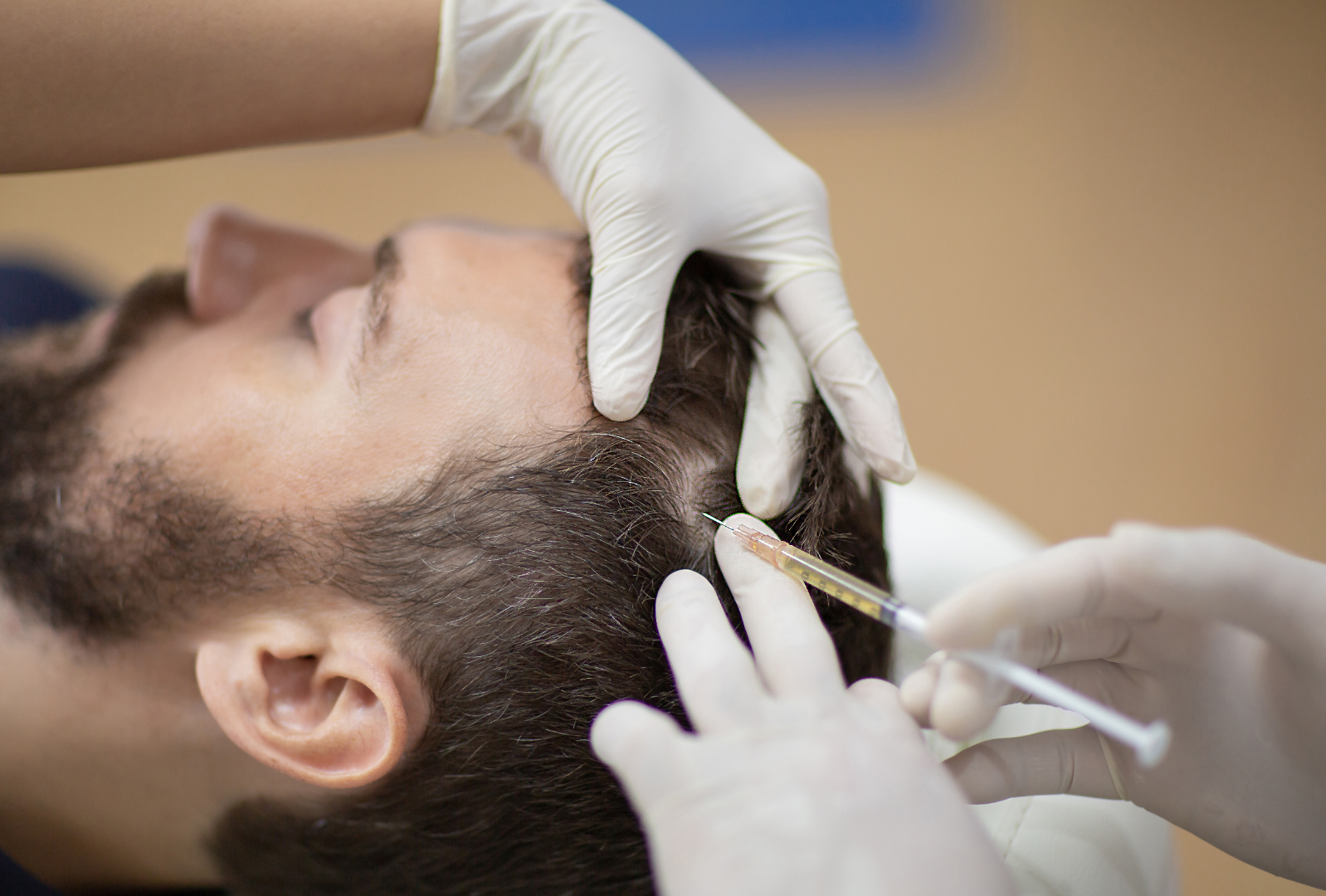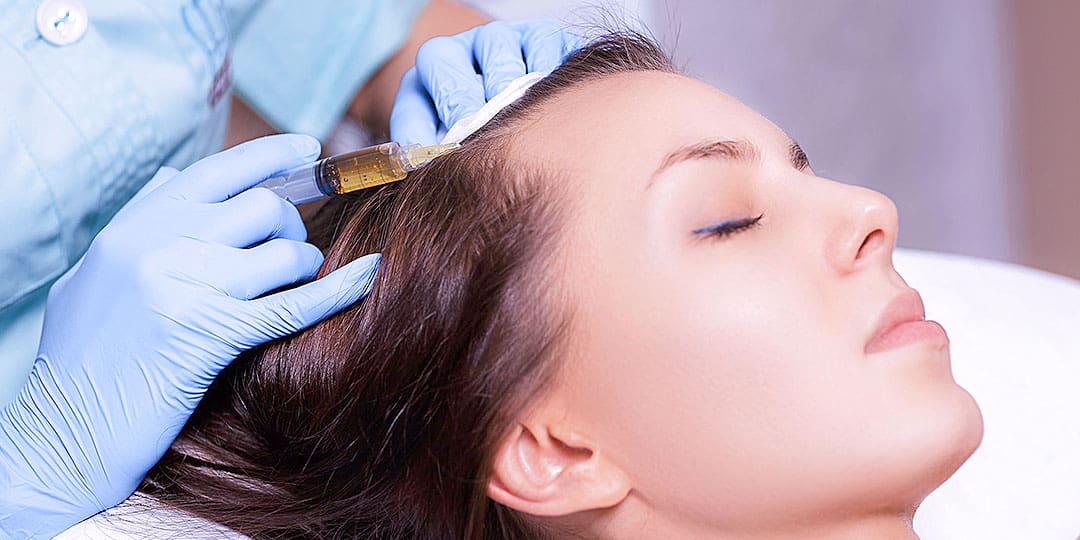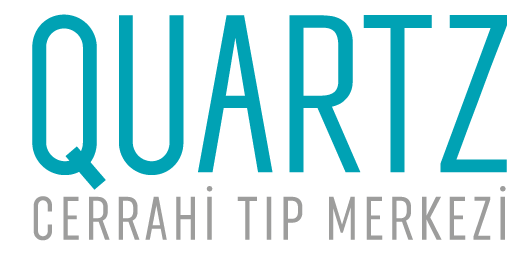
Contents

PRP hair treatment is a non-surgical, painless method that helps achieve healthy, lively, and voluminous hair. This treatment nourishes the hair follicles, reduces hair loss, and helps strengthen the hair. It is particularly effective for early to moderate hair loss and can provide successful results when combined with hair transplantation.
What Is PRP Hair Treatment?
PRP (Platelet-Rich Plasma) method involves injecting platelet-rich plasma, obtained from the individual's own blood, into the hair follicles. This increases blood flow to the treated area and supports tissue regeneration. As a result, hair follicles are strengthened, improving the quality, shine, and density of the hair.
| Feature | Description |
|---|---|
| Procedure Duration | 30-45 minutes |
| Anesthesia | Local anesthesia is applied |
| Procedure Type | Non-surgical, injection method |
| Recovery Time | Return to daily life on the same day |
| Side Effects | Minimal side effects as the patient's own blood is used |
Who Is Suitable for PRP Hair Treatment?
PRP hair treatment is suitable for individuals with hair loss, thinning, dull, and lifeless hair. However, certain criteria should be considered:
- Must have healthy hair follicles. It is not applicable to individuals with baldness.
- Suitable for individuals aged 18 and above.
- Not recommended for pregnant or breastfeeding women.
- Individuals with chronic diseases or a history of cancer should consult a doctor.
How to Identify Hair Loss?
- It is normal to lose 100-150 hairs per day. However, if the following symptoms are present, hair loss may be at an advanced stage:
- Excessive hair loss during showers
- Finding a large amount of hair on the pillow upon waking up
- Receding hairline and visible scalp
- Overall thinning of the hair
- The level of hair loss can be determined through an examination by dermatology or plastic surgery specialists.
In Which Situations Is PRP Hair Treatment Applied?
PRP therapy is a supportive procedure used to strengthen hair follicles and prevent hair loss. It can be applied in the following situations:
| Condition | PRP Effect |
|---|---|
| Genetic Hair Loss | Reduces hair loss, nourishes hair follicles |
| Hair Thinning | Strengthens hair strands |
| Post-Hair Transplant | Improves the quality of newly grown hair |
| Seasonal Hair Loss | Nourishes hair and reduces hair loss |
| Stress and Hormonal Imbalances | Ensures hair looks vibrant and healthy |
How Is PRP Hair Treatment Applied?
PRP treatment consists of a few simple steps:
- Examination: The level of hair loss and the condition of hair follicles are determined.
- Blood Collection: A small amount of blood is drawn from the patient.
- Centrifuge Process: The blood is processed in a special device to separate platelet-rich plasma.
- Injection: The prepared PRP solution is injected into the hair follicles using micro-needles.
- Recovery: The patient can immediately return to daily activities after the procedure.
How Many Sessions Are Required for PRP Hair Treatment?
For PRP treatment to be effective, it is recommended to undergo regular sessions. Typically, 6-8 sessions, done every 15 days, provide maximum benefit. The treatment duration may vary depending on the individual's hair loss level.
Before and After PRP Hair Treatment
Observing the differences before and after the PRP hair treatment is important to assess its effectiveness. Before the procedure, hair follicles may appear weakened, sparse, and lifeless, whereas after treatment, the hair becomes stronger, more vibrant, and voluminous.
| Condition | Before | After |
|---|---|---|
| Hair Density | Sparse and weak hair follicles | Denser and stronger hair structure |
| Shine | Dull and lifeless appearance | Shinier and healthier hair |
| Hair Loss Rate | Intense hair loss | Hair loss decreases to a minimum level |
| Hair Growth Rate | Slow-growing hair | Faster and healthier-growing hair |
What Are the Benefits of PRP for Hair?
- Thickens and strengthens hair strands.
- Restores shine to dull and lifeless hair.
- Nourishes hair follicles, reducing hair loss.
- Increases the rate of hair growth.
- Enhances the success of hair transplantation when combined with the procedure.
How Does PRP Work on Hair?
The active ingredient in PRP, platelets, is rich in growth factors. Platelet-derived growth factors (PDGF, TGF, FGF-2, VEGF, EGF), insulin-like growth factor (IGF-1), and neurotrophic factors support cell regeneration, differentiation, and vascularization processes, thereby promoting hair growth. PRP hair treatment extends the first and most effective phase of the hair growth cycle by improving the quality of hair follicles. As a result, the hair in areas treated with PRP becomes healthier, stronger, and more vibrant, with accelerated growth.
What Is the Role of PRP in Hair Transplantation?
PRP treatment after hair transplantation is an important supportive method that enhances the success of the procedure. PRP helps the transplanted grafts grow stronger and healthier while accelerating the healing process. The first PRP session is usually performed on the same day as the hair transplant, and subsequent sessions are typically applied every 15 days. PRP nourishes the transplanted hair follicles, ensuring that the new hair is thicker and more durable. It also accelerates tissue repair, maximizing the effect of the hair transplant.
PRP Hair Treatment Prices
The cost of PRP hair treatment varies depending on several factors. The brand of the hair kit used, the number of sessions, the size of the treatment area, and the experience of the doctor all influence the price. For more detailed information and pricing on PRP hair treatment, you can schedule a consultation with our center.
What Is the Post-PRP Hair Treatment Process?
- The patient can resume daily activities immediately after the procedure.
- The hair should not be washed on the first day.
- Avoid strenuous exercise for 2-3 days.
- The effects of PRP become noticeable within 3-4 weeks.

Frequently Asked Questions (FAQ)
Does PRP Grow Hair?
PRP hair treatment does not directly stimulate hair growth. Its function is to prevent hair loss, add vitality, health, and quality to the hair. PRP treatment, when combined with procedures like hair transplantation, can support hair growth and accelerate hair growth.
Is PRP Hair Treatment Painful?
PRP hair treatment involves the use of injectors at each stage. There is no incision made when blood is drawn or when the PRP solution is transferred. Local anesthesia is applied to the scalp during the transfer phase to prevent any discomfort from the needle. PRP hair treatment is a painless, non-invasive procedure, making it quite practical and comfortable.
Is There Any Harm in PRP Hair Treatment?
Since the PRP solution is derived from the patient’s own blood, there are no side effects or risks involved. PRP is not applied to individuals who may have contraindications, such as pregnant women or cancer patients. Therefore, PRP is a safe, non-hazardous procedure. It can be safely used on the scalp, just as it is used in many other parts of the body.
Is PRP Effective for Thinning Hair?
PRP, with its rich platelet content, helps restore thinning, weak, and lifeless hair to a healthy state. Thanks to PRP hair treatment, thinning hair becomes stronger, hair loss stops, and dull hair gains vitality.
![dr.leyla-arvas-800×1000.jpg[1] dr.leyla arvas](https://www.quartz.com.tr/wp-content/uploads/2024/11/dr.leyla-arvas-800x1000.jpg1_.webp)
Author : Op. Dr Leyla ARVAS
Dr Leyla Arvas is an internationally recognised specialist in aesthetic surgery based in Istanbul. Graduated in 1998 from Istanbul University Faculty of Medicine, she has developed her expertise by studying in Taiwan, Japan and Spain during her 20 years of experience.
This article April 18, 2025 was updated on
Editor: admin@quartz.com.tr


